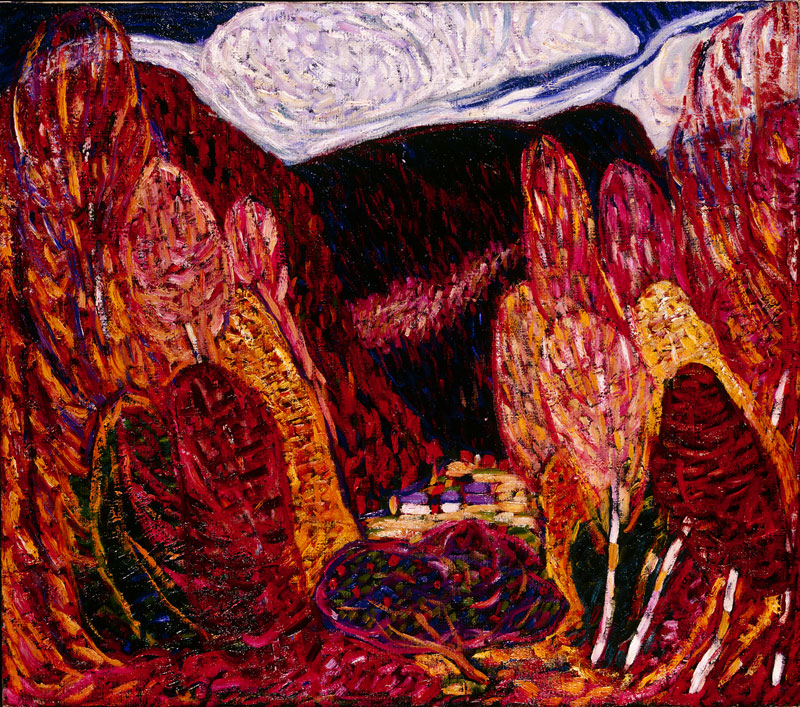
Landscape No. 36, 1908-09
Oil on canvas, 30 1/8 x 34 in.
ABOUT THE ART
This landscape painting shows hills, trees, and perhaps small buildings. The artist chose to use bright colors, simple shapes, and energetic brushstrokes to suggest a mountain-top view into a lush valley. The warm colors of red, gold, and rust suggest it may be autumn. American Marsden Hartley painted it after he had seen innovative paintings from European artists like French painter Henri Matisse. Like Matisse, Hartley wanted to express emotion and mood more than what one could simply see. He wanted to express energy, movement, light, and power in his landscape images. This bold painting style became known as Fauvism-from the French word for “wild beast”-because it seemed so wild and untamed when compared to the more traditional and realistic art of the early 1900s. Hartley looked to nature to symbolize the elemental forces of change in the universe. Throughout his life, he felt the mountains from his childhood in Maine held great power.
ABOUT THE ARTIST
Marsden Hartley experimented with ideas and styles of modern art in the beginning of the twentieth century. Born in Maine in 1877, he traveled widely through America and Europe. The places and the people he encountered in these travels affected his thinking about his art. Early in his career, Hartley wanted to capture the spiritual forces he felt in nature. He experimented with many styles of painting-from realism to abstraction-searching to express his ideas and emotions. In 1912 Hartley traveled to Paris, where his painting became increasingly abstract. He also began to make symbolic portraits. (See his Portrait, in this packet.) Forced to return to Ame1~ca during World War I, Hartley wandered and worked across North America and later returned to Europe, never settling too long in one place. He returned to more traditional, realistic styles of painting, making landscapes, still lifes, and portraits. Still, the themes of the power of nature and the loss of loved ones continued to appear in his work until his death in Maine in 1943.
Vocabulary
Abstract – a style of art that does not directly mimic the appearance of objects from the natural world, but instead is composed of simplified shapes, forms, or color to express ideas, experience, or emotion.